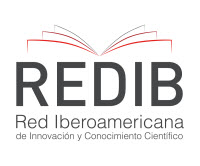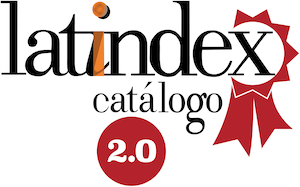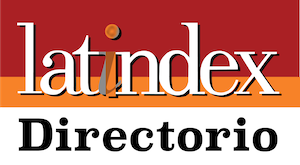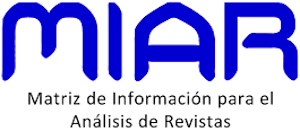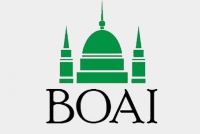NORMATIVE FOR THE PREPARATION AND PRESENTATION OF WORKS
SATHIRI SEMBRADOR: NORMATIVE
The papers submitted to the journal Sathiri: sembrador de la Universidad Politécnica Estatal del Carchi (UPEC) must be prepared and presented under the following regulations:
- Application
1.1 The proposed articles will be the result of final results or advances in research, either with a reflective, speculative, state of art or other nature. However, articles can only be submitted under the responsibility of their author or authors.
The articles presented will be original and unpublished. The author or authors will send them electronically in Word file to the publicaciones@upec.edu.ec or publicacionesupec@gmail.com. In addition to the article, they must attach a scanned letter that is addressed to the Academic and Scientific Production and Dissemination Unit of the UPEC in which they express that it complies with the rules of arbitration and that its text is original and unpublished.
Download here the format of the trade.
1.2 The submissions shall be submitted in accordance with the following requirements:
- Font: Times New Roman
- Font size: 12 points
- Line spacing: 1.15
- Margins: upper 2.5 cm; lower 2.5 cm; left 3cm; right 3 cm.
1.3 The maximum length of the article is 25 pages, indicated in the Word counter.
1.4 The Editorial Board and the UPEC Academic and Scientific Production and Dissemination Unit
set the maximum times for the submission of articles for each biannual publication:
- For the January - June issue, work is received until the end of October.
- For the July - December issue, works are received until the end of April.
The call will be visible on the OJS website of the journal, available on the UPEC website, www.upec.edu.ec , in the Publications, Journals section. In addition, it will be promoted on other UPEC channels.
- Structure of the articles
Download the format of the articles presentation here.
2.1 Title of the article
It should not exceed twenty words. It should be accurate, precise, concise and brief. When reading it, the reader should immediately identify the subject.
2.2 Article title
It is the English translation of the title of the article.
2.3 Date of delivery
It is the indication of the day, month and year in which the article was submitted to the journal by sending the email.
2.4 Data per author
Names and surnames:
Curriculum: only professional qualifications should be mentioned, not courses or training. Titles should be mentioned starting with the highest ranking.
Contact telephone: Please indicate country and area codes.
E-mail address:
The Orcid code is:
Institutional affiliation:
Position in the institution:
Country of the institution:
2.5 Details of the article
Abstract: must have a maximum of 250 words. It will be written in a single paragraph. It should not include information that is not part of the article. It should present the focus and objective of the work. It should contain a brief description of the methodology, results and main conclusions. It should not include references or citations. It should be written in the past.
Keywords: three to five words or terms representing the main descriptors of the article should be written. Each word or term is separated by a comma).
Abstract: is the translation of the abstract into English.
Keywords: is the translation of key words into English).
2.6 Parts of the article
Download the format of the articles presentation here.
Introduction
It should explain why the investigation has been carried out. It allows to describe the interest, importance and purpose of research in the scientific context of the moment, motivating the reader to read the work.
It is suggested to be guided by the following recommendations:
- Write what motivates you to do the research.
- Explain the unresolved question or problem you will address.
- Describe the background, i.e., what is known about the research problem.
- Justify why you conducted this study.
- It is advisable to present your hypothesis or objectives at the end of the introduction.
Materials and methods
This section should explain how the investigation was conducted. It is suggested to give details of the steps that were followed and the materials used to obtain the results of the research. The methodology should be reproducible; hence the importance of the clarity with which it is presented.
For its drafting, it can be guided by the following elements:
- Describe the type of research carried out (descriptive, experimental, quasi-experimental, case study, basic, applied, technological, etc.). If an experiment has been performed, it is necessary to describe its design: random, controlled, cases and controls, clinical trial, prospective.
- Describe the population or universe on which the study was conducted, specifying the sample, selection criteria, and how it was performed (you can incorporate the formula).
- Indicate where the study was conducted; that is, the action environment.
- Describe the research methods, techniques and instruments used, indicating where and when they were applied.
- Can indicate the statistical methods used and how the data were analyzed (descriptive, analytical, variability meters or others).
- If necessary, please indicate the materials, inputs, equipment and technologies used.
Results and discussion
In this section introduce the new knowledge you found through research, especially the most transcendent. If necessary, include tables and figures, commenting on the most relevant data and avoiding unnecessary and repetitive information.
In parallel, incorporate the discussion, that is, the interpretation of the data in relation to the original objectives and hypotheses. You can take into account the following considerations:
- Compare own conclusions with those of other authors.
- Identify methodological errors.
- Do not repeat the presentation of results more generally.
- Write this section in the present because the results of the work are already considered evidence.
- Identify perspectives, i.e., future research needs.
- Examine and formulate with logic and imagination the more general aspects of the conclusions, in order to arouse readers' interest.
- Keep an eye out for excess words.
Conclusions
State the most relevant conclusions, which must be justified by the data presented and which are directly related to the results and discussion. If you wish, you can express them by listing them or by writing them down.
Recommendations
Suggest new research that may emerge from your findings. Please also indicate what other ways the problem and the hypothesis of your research can be addressed in order to draw further conclusions. Encourage the reader to continue with the topic or discipline you have developed or in which your research is framed. If you wish, you can express them by listing them or by writing them down.
References
Only works that have been cited should be referenced. It is recommended to make the references in an automated way through the option provided by Word, in the tab References. Remember that the citation policy used by the magazine is APA.
Download the format of the articles presentation here.
- Citation Format
The citation regulations used by the journal correspond to those established by the American Psychological Association, known as APA Standards, in its most up-to-date edition.
To resolve any concerns or to have a general orientation, the Academic and Scientific Production and Dissemination Unit of the UPEC has prepared an adapted summary on a playful basis.
Download the APA Citation Format here
- Tables and figures
Tables: should be designed using only horizontal lines, the number of the table will be placed in the upper left margin and the next row the title will be placed, which should be brief, clear and explanatory. Letter 10, line spacing 1, without line spacing. For example:
Table 1.
Example of table name
|
|
|
|
|
|
|
|
|
|
|
|
Figures: should enrich the text, without duplicating it. Your information should be essential, visual and easy to understand. For the title of the figure, proceed as follows: the number of the figure shall be placed in the upper left margin and the next row the title shall be placed, which shall be brief, clear and explanatory. Letter 10, line spacing 1, without line spacing. For example:
Figure 1.
Example of the name of the figure

It is recommended that the following aspects be taken into account:
- In case it is a brief, informative or opinion article, the use of tables or figures may vary and respect its presence in it.
- Tables and figures in black and white or colour with a resolution of 300 dpi (dots per inch) may be included. It is suggested to include a separate folder with the original figures and tables files.
- The size of the figures and tables can be modified at the time of the layout of the journal without the author’s authorization.
- If the figure or table is of own authorship does not need to place the author, otherwise it will be placed at the bottom of each, with letter number 9, the source and the author.






